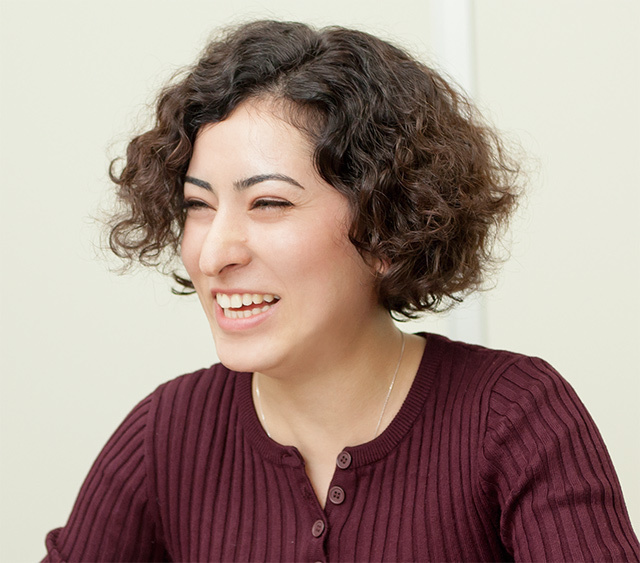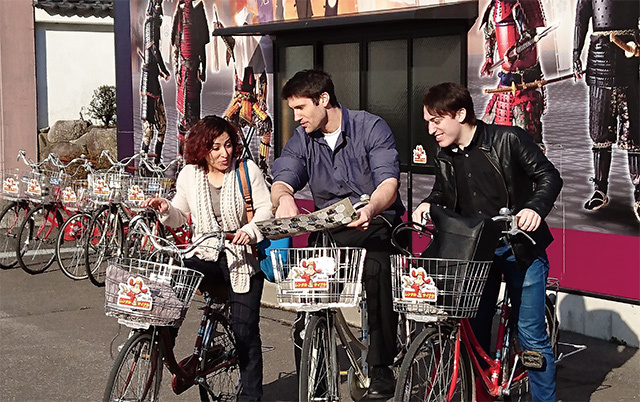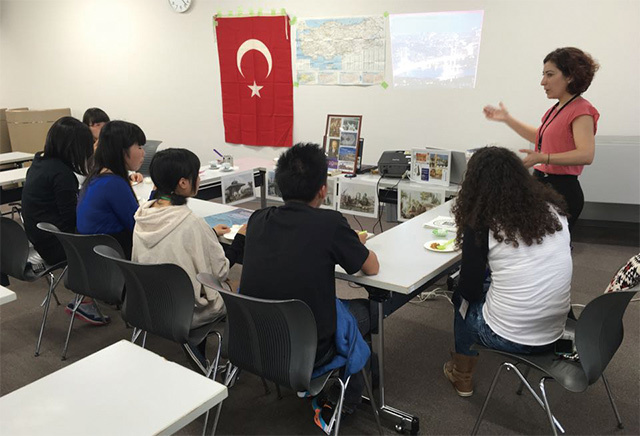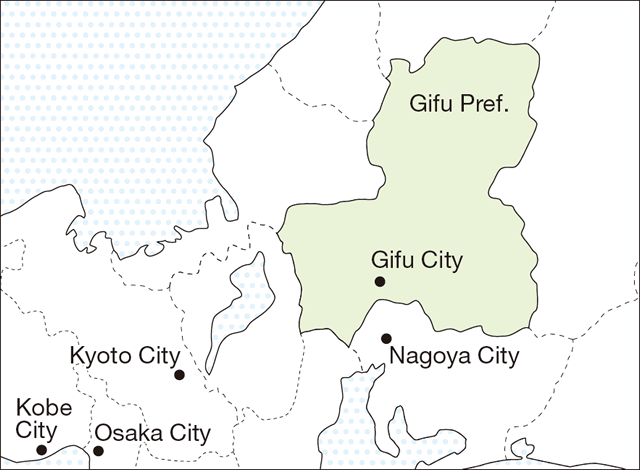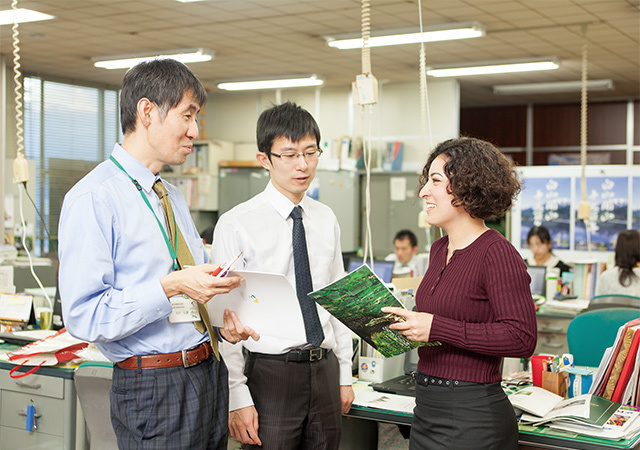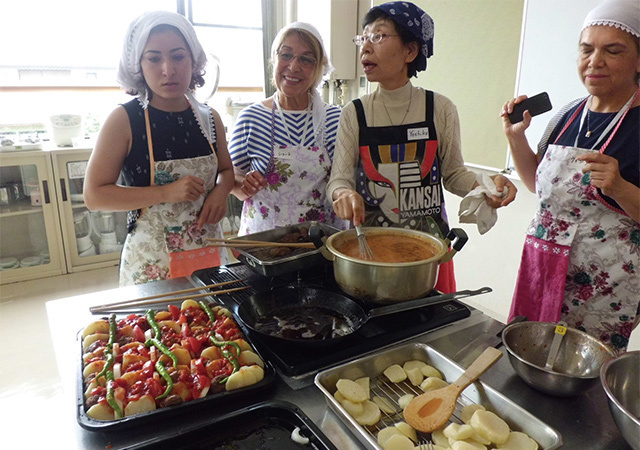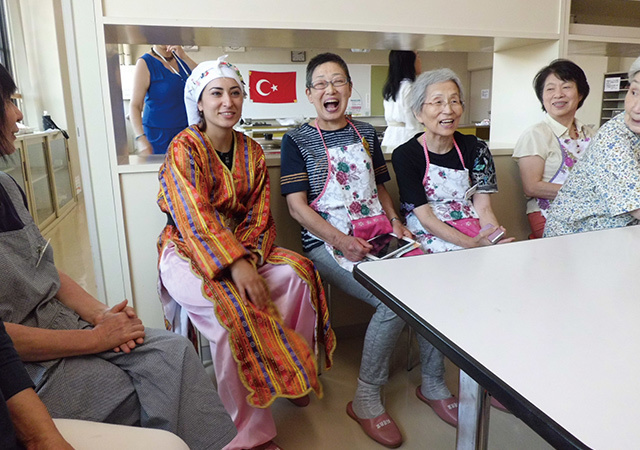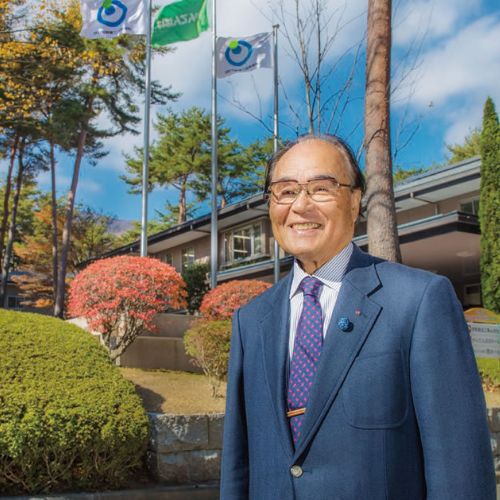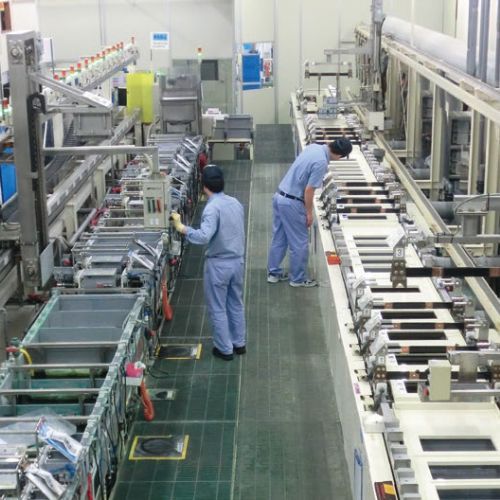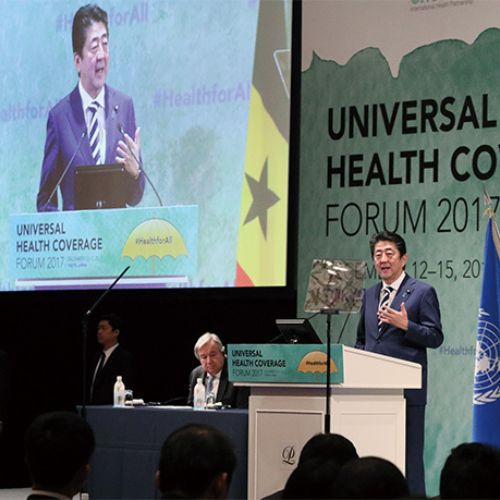Sevgi Çevik
Born in Kayseri, Turkey. The only Turkish Coordinator for International Relations (CIR) in the JET Programme. Has been working in the International Affairs Division of the Gifu Prefectural Government since 2015. Introduces her home country through lectures and cooking classes, and practices aikido to bond with the people of Gifu.
Like many children around the world, I grew up watching Sailor Moon and Pokémon, in my case dubbed in Turkish. I met anime again in university, and this time, I started noticing that these anime were portraying much about Japan: school life, the land’s natural beauty, and the subtleties of Japanese human relations. Being rather shy, I could relate with the way anime characters seemed to read others’ thoughts, or as Japanese say, “kuki (air) wo yomu (read).” Turkish people tend to be more direct than Japanese, but less so than Westerners. I no longer watch anime, but it prompted my interest in Japanese culture, and in the language as well. Japanese has similarities with Turkish. Word order in the two languages, for example, follows the same subject-verb-object pattern. Some scholars actually classify Japanese in the Altaic language family with Turkish.
Attracted by the feel of the culture and the sound of the language, I enrolled in my university’s Japanese classes. Studying through the winter vacation, I was able to jump to upper level classes in a short period of time. After one and a half years of learning Japanese, my teacher selected me as the exchange student for a full-scholarship program in Shimonoseki, Yamaguchi Prefecture.
During my stay there, I took time to travel across Japan. Starting from Kyushu, I visited Gifu’s scenic spots on the way, and reached Hokkaido one month later. I knew I wanted to stay in touch with Japan, so after returning to Turkey and graduating from university, I joined a Japanese company rehabilitating the two bridges linking Europe and Asia across the Bosphorus Strait, the waterway connecting the Black and Mediterranean Seas.
Ready to ride on rental bikes at an event in the town of Sekigahara, famous as the historic site of the Battle of Sekigahara (1600) that set the course for the establishment of the Tokugawa Shogunate.
Two years after I left Japan, I learned online that Gifu was looking for a Coordinator for International Relations (CIR). I applied, waited, and was accepted. Warmly welcomed in Gifu, I felt comfortable in the medium-sized city: convenient but close to nature; quieter and less bustling than Tokyo. Gifu reminded me of my hometown of Kayseri, a modern industrial and trade center on the old Silk Road with a population of 1 million. Both Gifu and Kayseri are crossroads cities in the middle of the country.
As a CIR, I introduce my largely unknown homeland in schools and at cultural events. I use maps to show how Turkey bridges Europe and Asia and lies within the same latitudes as Japan, and like Japan, has four distinct seasons. To correct the vague image some Japanese seem to have of Turkey as a yellowish and barren land, I show them our beautiful beaches, forested mountains (a 3,900 m [12,795 ft.] extinct volcano with ski resorts towers over Kayseri), and World Heritage sites. I teach the rich history of Turkey, including the period when the Turkic peoples weren’t even in Anatolia, or Asia Minor (a large peninsula in western Asia between the Black Sea and the Mediterranean Sea). I have also learned to cook more Turkish food and enjoy sharing our dishes with my friends in Japan: karnıyarık (eggplant cooked with ground meat and onions in tomato sauce), kısır (ground bulgur, parsley, and tomato paste with other vegetables), lentil soup, and desserts like rice pudding. I also demonstrate with hugs and kisses how we greet in Turkey.
As I brought Turkish culture to Gifu, Gifu taught me Japanese culture. I started taking aikido lessons at a local dojo (training hall), and that allowed me to interact with neighbors. I so appreciate that people here are modest, and kind to every foreign visitor, regardless of their religion, background, or nationality.
Japan and Turkey can learn from each other. Decisionmaking in Turkey tends to be impulsive. We start immediately to “just do it,” and often find that we are on the wrong track and start over again. Japan, on the other hand, deliberates carefully, avoiding mistakes, but waits too long to make changes. Japan boasts an enviable infrastructure and offers a fine education, but children (and adults) tend to be overscheduled. In Turkey, schools need much improvement, but children do have the time to play.
I want to build on my time in Gifu when I move on, and find a job in a company that connects Turkey and Japan, or with an NPO that deals with gender equality and women’s rights, on which both Japan and Turkey need significant improvement. I desire as a Turkish woman to use the knowledge I have gained here to foster deeper understanding and friendship between the two countries I so love.


























